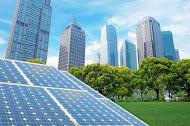
Here's how the increased use of solar panels affect Australia's power sector
Is a breakaway from traditional sources impending?
Continued growth in rooftop solar panel installation in Australia will have a material impact on the credit profile of issuers in the power sector if total uptake reaches a critical mass and results in a widespread disconnection from the grid.
According to a research report from Moody's Investors Service, it does not see this as a key credit risk for the sector in the next 3-5 years, based on its expected growth rate of solar panels.
Traditionally, electricity users rely on centralized generation assets and distribution grids to meet their power needs. This underpins the economy’s dependence on the grid system and the close linkage between energy consumption and economic growth.
With the increased availability of solar panels, rooftop solar systems represent a new and alternative source of energy that would disrupt established relationships across the power sector.
Here's more from Moody's Investors Service:
For the network companies, rooftop generation allows users to bypass the grid and avoid network tariffs.
Likewise, we expect a gradual decline in earnings for power generators and retailers owing to decreasing energy demand from the grid, particularly in the more profitable residential market.
The total capacity of rooftop solar panels installed in the Australia’s National Electricity Market (NEM) – which covers all East Coast States, South Australia and Tasmania – has increased substantially since 2010, as presented in Exhibit 1.
In particular, the total number of new units installed exceeded 300,000 in 2011 and 2012, before settling to around 200,000 in 2013 and likely in 2014 based on installation completed in the year to date.
We believe the primary driver behind this substantial growth has been the improved affordability of rooftop systems, reflecting lower panel costs and supportive government policies.
We believe the cost of solar panels and associated storage equipment will continue to fall over time, as the production process becomes more efficient, supporting further increases in solar penetration.
However, growth in installation will also be influenced by changes in renewable policies and network regulation.
The decline in the number of panels installed in the NEM during 2013 and 2014 partly reflected a winding back of some solar subsidies, including the FIT and rebates.
We expect the government will continue to unwind subsidies over time to address the inherent tension in the existing network tariff framework, and facilitate a more cost-reflective energy market.
Such changes would likely temper the growth prospects of rooftop solar panels, which currently represent less than 5% of total NEM generation capacity. For these reasons, we believe credit challenges arising from a sizeable solar market and widespread disconnection from the grid are unlikely to crystallize before 2020.























 Advertise
Advertise








